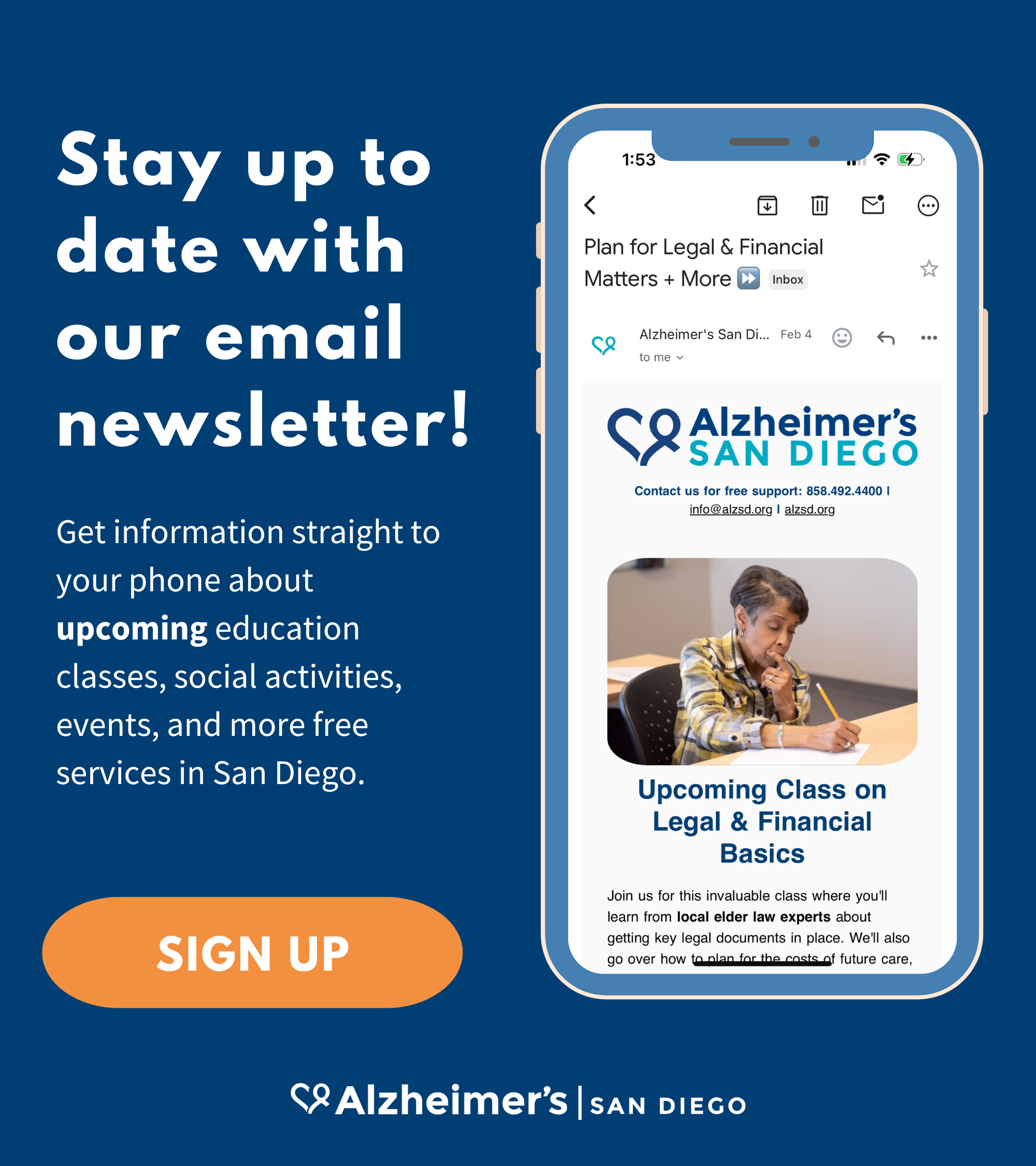Diversity, Equity, Inclusion, & Accessibility Committee
The purpose of the Diversity, Equity, Inclusion, & Accessibility (DEIA) Committee, founded in 2020, is to bring together employees of Alzheimer’s San Diego who are engaged in diversity and outreach initiatives. The committee meets monthly to discuss, communicate, and create collaborations in ongoing and upcoming initiatives that support the goal of enhancing the environment for diversity, inclusion, and equity within the organization and the community. This is a living document that will continue to grow and change, as we know the work is never done. Click here to return to the main DEIA page.
Goals and Objectives:
Tier 1
Goal 1: Provide effective, equitable, understandable, and respectful quality care and services that are responsive to diverse cultural beliefs and practices, preferred languages, health literacies, and other communication needs.
- Objective 1: Complete an analysis of the organization starting with the survey results. Review the survey results and determine areas of internal improvement.
- Objective 2: Brainstorm ideas for what changes can be made now, in the short-term, and in the long-term, based on identified areas of internal improvement.
- Objective 3: Present your findings to all staff to share next steps.
Goal 2: Identify what it means to have systemic racism, structural racism, institutional racism, white privilege, white fragility, microaggression, white-splaining, ableism, ageism, class discrimination, gender and other prejudices/biases in the workplace.
- Objective 1: Look through all materials (tip sheets, brochures, handouts), website, educational curriculum, marketing collateral, and other documented content to determine if we are supporting any of the above.
- Objective 2: Research and document culturally appropriate changes to be made, creating and sharing a diversity statement (on the website & more?).
Goal 3: Provide easy-to-understand print and multimedia materials and signage in the languages commonly used by the populations we serve.
- Objective 1: Identify the top five populations and languages we commonly serve in San Diego.
- Objective 2: Research community organizations that serve these populations and learn more about what they offer and how we can collaborate.
- Objective 3: Write a proposal for how this will be implemented.
Goal 4: Educate and train governance, leadership, and workforce in culturally and linguistically appropriate policies and practices on an ongoing basis. Evaluate current recruiting and hiring practices and onboarding processes.
- Objective 1: Share article (which includes definitions of racism) with the Board of Directors and develop a follow-up training to learn more about their understanding of what it means and how it relates to their roles within Alzheimer’s San Diego.
- Objective 2: Create quarterly updates for the Board of Directors to showcase the work being done on the DEIA Committee.
- Objective 3: Provide recommendations to ensure diversity in hiring, and best practices for onboarding new employees.
Tier 2
Goal 5: Partner with the community agencies to design, implement, and evaluate policies, practices, and services to ensure cultural and linguistic appropriateness.
- Objective 1: Update and revitalize existing and new materials, brochures, and other printed content to reflect culturally sensitive language.
- Objective 2: Seek to explore new opportunities that bridge community agencies with Alzheimer’s San Diego.
- Objective 3: Write a proposal for how this can be initiated and implemented.
Goal 6: Conduct ongoing assessments of the organization and hold regular quality-improvement activities. Collect and maintain accurate and reliable demographic data to monitor and evaluate changes and outcomes to inform service delivery.
- Objective 1: Develop methodology for accurately gauging the internal health of the organization. Solicit feedback from staff in terms of ongoing education, team-building, etc.
- Objective 2: Develop best practices for gathering demographic data from clients, ensuring we are servicing underserved communities and closely matching the County’s diverse makeup within our own client base.
Goal 7: Create internal conflict and grievance resolution processes that are culturally and linguistically appropriate to identify, prevent, and resolve conflicts or complaints.
- Objective 1: Define best practices for conflict resolution.
- Objective 2: Create process for conflict resolution.
Goal 8: Communicate the organization’s progress in implementing and sustaining changes to all stakeholders, constituents, and the general public.
- Objective 1: Develop communication plan.
